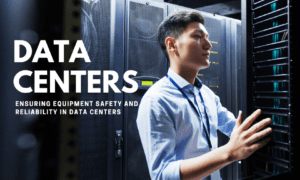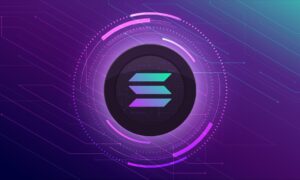Managing people and payroll has never been more complex. Remote work, shifting regulations, and employee expectations mean that companies can’t afford to rely on outdated systems. HR and payroll need to work together seamlessly. But too often, businesses find themselves juggling separate tools and manual fixes.
That’s why I put this guide together. I’ll walk you through the seven platforms I recommend most in 2025, showing what each does best, who they’re designed for, and the trade-offs you should consider before making a choice.
What should I look for in HR and payroll software?
Whenever I help a business choose HR and payroll software, I usually start with the basics. The right platform should save you time, reduce errors, and make life easier for both you and your employees. Here are the features I always check for:
1) Reliable payroll processing: Handles tax filings, direct deposits, and deductions without constant manual checks.
2) Core HR tools: Onboarding, employee records, performance management, and PTO tracking.
3) Integrated benefits: Syncs health, retirement, or perks directly with payroll.
Ease of use: Clear navigation for both administrators and employees.
4) Flexibility to grow: Able to support additional staff, new locations, or international payroll.
Reporting and insights: Gives clarity on costs, compliance, and workforce trends.
5) Responsive support: Accessible help when issues arise.
For me, the best HR and payroll software is the one that checks these boxes without overwhelming you with features you don’t need.
Top 7 HR and Payroll Software Tools in 2025
|
1) HiBob – Best All-in-One HR and Payroll Platform
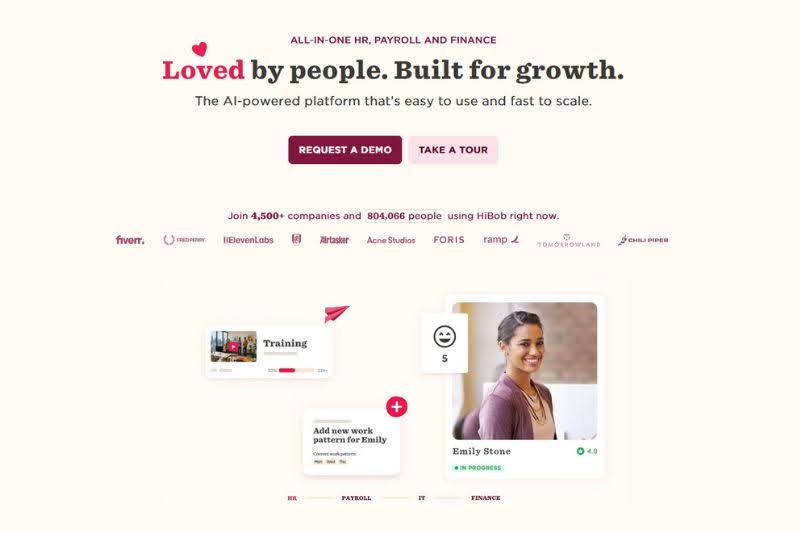
When I recommend a platform that can handle both HR and payroll in one place, HiBob is usually at the top of my list.
What sets it apart is how modern and people-focused it feels. Payroll is accurate and flexible, but HiBob also covers HR with onboarding, performance, engagement, and benefits. That means you are not juggling different tools or worrying about syncing data between systems.
With the launch of its native U.S. payroll and benefits administration, HiBob is expanding fast while keeping its intuitive design.
| Pros: All-in-one HR and payroll, strong automation, global integrations, and an employee-friendly interface. Cons: More advanced than very small teams may need. |
2) Gusto – Best for User-Friendly HR and Payroll
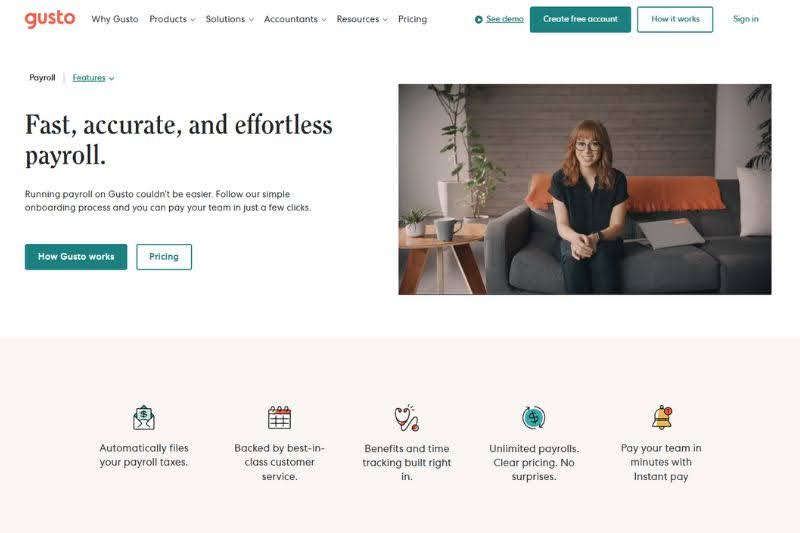
Gusto is the platform I suggest when someone says, “I just want something simple that works.”
The interface is clean, tax filings are automated, and payroll runs are stress-free. On top of that, Gusto covers HR basics like onboarding, PTO tracking, and benefits, making it much more than a paycheck tool.
The trade-off is that its HR features are lighter compared to larger systems, but for small businesses or first-time payroll users, it’s approachable and reliable.
| Pros: Clear design, predictable pricing, responsive support, includes HR essentials.
Cons: Benefits are not available in every state, and advanced HR features require higher-tier plans. |
3) BambooHR – Best HR Platform with Payroll Add-On
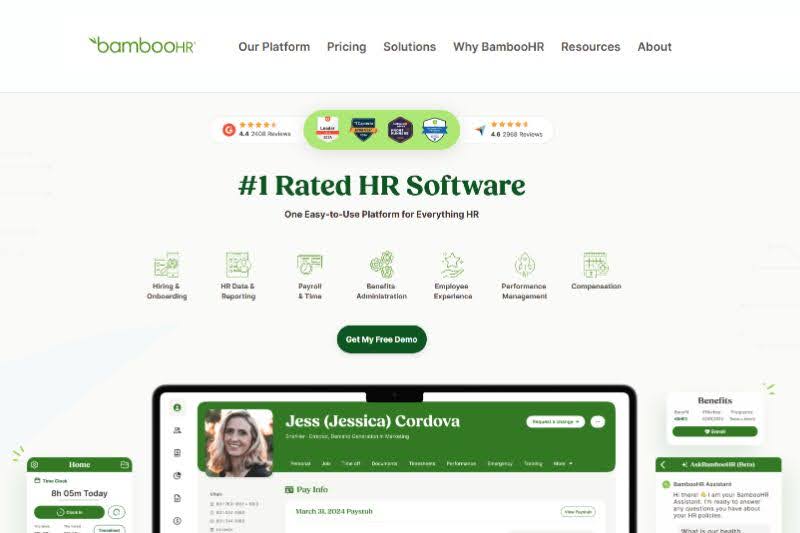
BambooHR has long been a favorite among small and mid-sized companies, thanks to its approachable HR tools, including applicant tracking, onboarding, performance management, and employee records. More recently, it added payroll as an integrated option, making it a full people management platform.
Its strength is simplicity. The HR features are polished, and the payroll add-on means you don’t need to jump between systems. The limitation is that payroll is U.S.-only, so international businesses may need a different solution.
| Pros: Easy-to-use HR system, strong talent tools, HR + payroll integration, affordable for SMBs.
Cons: Payroll is limited to U.S. employees, and some advanced HR features may cost extra. |
4) ADP RUN – Best for Growing Businesses
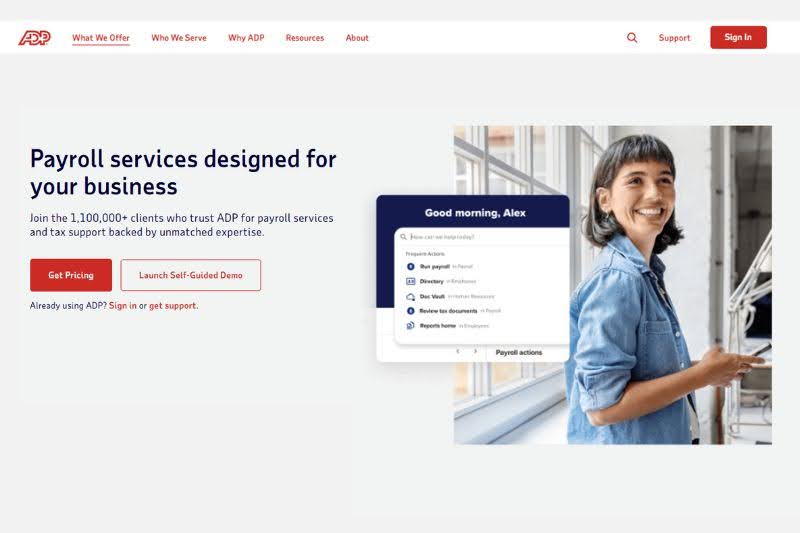
Some platforms are great when you are small, but struggle to keep up as you grow. ADP RUN is the opposite. It is built to scale, combining reliable payroll with HR tools like hiring, onboarding, and time tracking. What I like is that you can start small and then add more HR support as your business expands, including access to HR advisors and compliance resources.
It does require a learning curve compared to simpler tools, but its scalability and compliance expertise make it a strong long-term partner.
| Pros: Highly scalable, strong compliance features, trusted brand, 24/7 support. Cons: Pricing is only available by quote, and there is a learning curve for very small teams. |
5) Paychex Flex – Best for HR Support and Expert Guidance
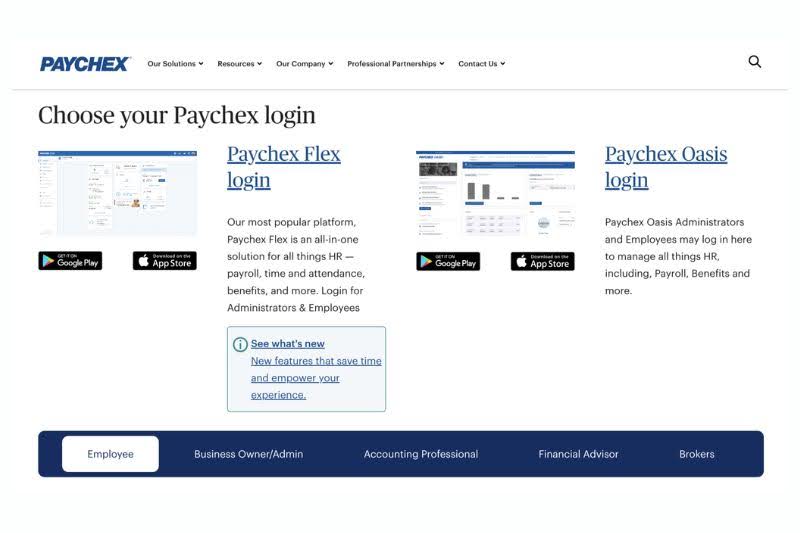
What makes Paychex Flex stand out is the level of personal guidance it offers. Every client gets a dedicated payroll specialist who can answer questions and troubleshoot issues. That’s reassuring if you don’t have in-house expertise.
Beyond payroll, Paychex Flex includes benefits, time tracking, scheduling, and compliance support. Its interface isn’t as sleek as others, but the combination of tech and human support is dependable.
| Pros: Dedicated payroll specialist, wide HR feature set, flexible add-ons, strong compliance support. Cons: Add-ons raise overall cost; interface less modern than rivals. |
6) Rippling – Best for Automation and Integrations
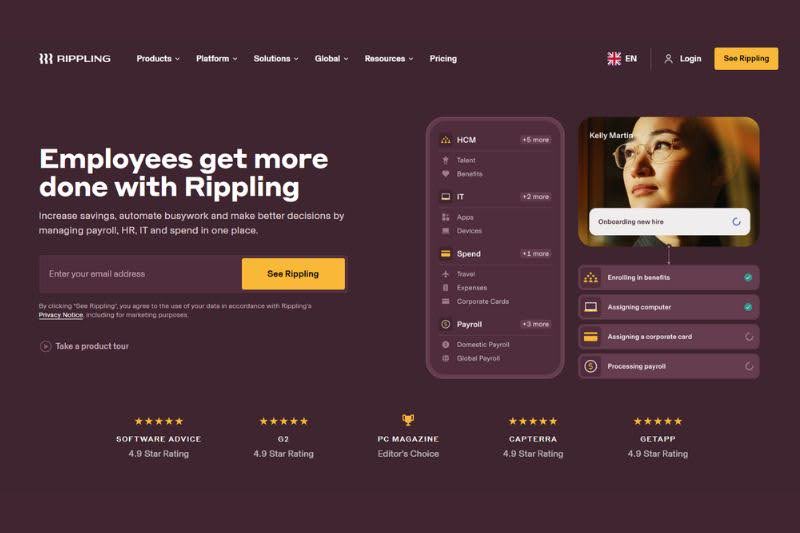
Rippling is one of the most innovative options on the list. It extends beyond HR and payroll into IT and finance, giving you a central hub for multiple business functions.
Its modular design means you can start small and add features like device management or expense tracking later. Automation is a real strength, but the system can feel like overkill if all you need is basic HR and payroll. Pricing also rises as modules are added.
| Pros: Highly automated, integrates HR, IT, and finance, modular and scalable, strong global support. Cons: Costs increase with add-ons, can be overkill for smaller teams. |
7. Workday – Best for Large Enterprises
Workday sets the benchmark for enterprise HR and payroll. It combines human capital management, payroll, finance, and analytics in one extensive platform.
It’s not designed for small businesses, but for global enterprises; it delivers depth, reporting power, and worldwide payroll reach. The investment in time and budget is significant, but for companies at scale, Workday remains a leader.
| Pros: Enterprise-grade HR and payroll, advanced analytics, strong global capabilities, unified HR and finance. Cons: Expensive, complex implementation, not suited for small businesses. |

How to Choose and Implement HR and Payroll Software
Buying HR and payroll software isn’t just about picking the tool with the best features. The right process will save you time, money, and frustration down the road. Here’s how to approach it:
Step 1: Audit your needs
Start by listing your current pain points, such as manual payroll tasks, compliance headaches, or delays in onboarding. From there, decide what features are essential right now versus which ones are simply “nice-to-have” for the future, like global payroll or advanced analytics.
Step 2: Shortlist 3–5 platforms
Once you know what you need, compare your requirements against vendor websites and reviews. Narrow the list to three to five platforms that best match your company’s size, budget, and location, and eliminate those that clearly won’t fit.
Step 3: Request demos or free trials
With your shortlist ready, get hands-on experience. Request demos or sign up for free trials to test the platform’s interface. During these sessions, ask vendors to walk you through real use cases such as processing bonuses or managing PTO, so you can see how the system handles your specific needs.
Step 4: Compare pricing and contracts
Next, take a close look at the cost structure. Understand per-employee fees, add-on charges, and year-end costs, since these can quickly add up. Prioritize vendors that offer transparent pricing and flexible contracts that can scale as your team grows.
Step 6: Run a pilot rollout
Finally, before committing fully, test the system with one department or a small group of employees. Collect feedback from both administrators and staff to make sure the platform works smoothly in practice, and use those insights to refine the full rollout.
Implementation Tips
|
Final Thoughts
HR and payroll do not have to be managed separately. The right software brings them together, saving time while also giving employees a better experience.
For me, HiBob is the best overall choice because it balances payroll compliance with HR depth and a user-friendly design. Gusto and OnPay are great options if simplicity is what you need. ADP RUN and Paychex Flex add more structure and support as you grow, while Rippling and Workday serve businesses with advanced or enterprise-level requirements.
No matter which platform you choose, the best HR and payroll software is the one that matches your priorities and makes managing people and pay feel less like a burden and more like a system that works with you.




















